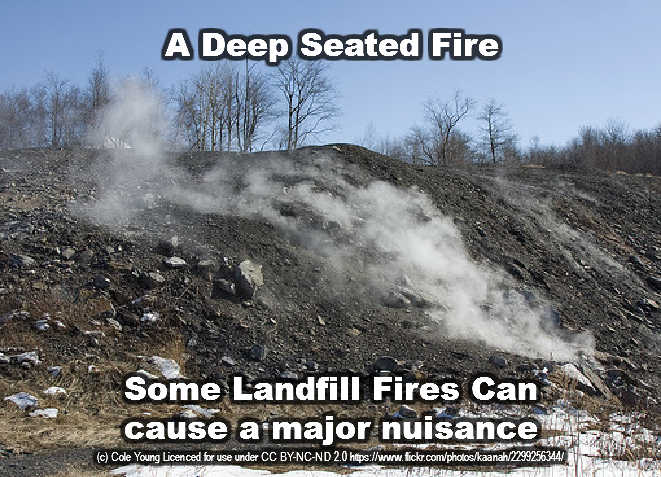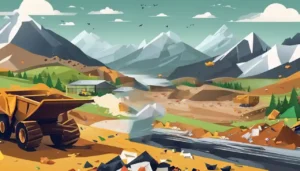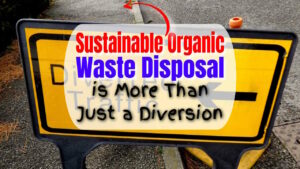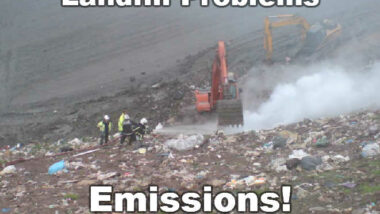 Landfill fires occur fairly commonly within landfills throughout the world, and to this day much burning of waste on landfills takes place in many developing nations. We classify landfill fires into two types; intentional and unintentional.
Landfill fires occur fairly commonly within landfills throughout the world, and to this day much burning of waste on landfills takes place in many developing nations. We classify landfill fires into two types; intentional and unintentional.
Intentional Landfill Burning
Burning of municipal waste in the open is not recommended under any circumstances, although in some rural and isolated districts in the United Kingdom, the practice continued until the mid-1980s. The practice is also known to have been practiced by the author in rural France as recently as ten years ago in the mid 1990s, where a rural household waste site was found where the operator systematically set fire to the piles of rubbish on a daily basis.
Such burning would reduce waste volume, however, the atmospheric pollution produced by such practices if indefensible on all but the very most low population areas, poorest economies and plastics free wastes.
The presence of plastics within waste when burnt at low temperatures in the open has long been known to produce hazardous chemicals such as dioxins , which are carcinogenic. Such burning can, as a result, never be condoned, and the EA prosecutes those who persist in open burning of waste.)
Waste burning in the open, and especially on landfills has been subject to a total ban on all European landfills since the Landfill Directive was first implemented in the 1990s. Furthermore, a no smoking ban has existed for many years on all EU landfills.
Unintentional Landfill Fires
Over the last few years anecdotal evidence suggests that there has been an increase in landfill fire occurrences in the UK.
It would seem likely that increasing emphasis on landfill gas generation and more highly optimized gas extraction may be leading to increased landfill fire incidences, due to the tendency for air to be pulled into the waste by the suction applied. Ingress of air may cause hot spot locations which then become fires.
The public should not be alarmed that these fires have occurred. The fires may be costly to the operator of a landfill, and although the fire may be quite difficult at times to extinguish, and can continue to burn for quite long periods, they are always very limited in extent within a modern landfill, and are not uncontrollable.
Landfill fire precautions, include:
- Environmental monitoring
- Landfill fire prevention by adoption of good operational practice and techniques.
- Landfill fire control and mitigation strategies are available in the event of a fire developing, and remediation techniques are available for landfills, following a landfill fire.
Landfill fires occur daily somewhere around the world—over 8,000 of them a year—and are fairly common in the U.S. Surface fires are usually extinguished fast, often because of structured fire response plans, good communication and solid partnerships with emergency responders.
An effective fire response plan can include an incident command structure, which needs a number of focused groups. Stakeholders commonly involved include landfill owners, local fire departments and contractors, depending on capacity, experience and availability, says Tony Sperling, president of Landfill Fire Control in Vancouver, B.C.
“One key we find is that training with the fire department is a really effective way to build relationships and ensure successful responses,” says Sperling. via www.waste360.com
Surface and Deep Seated Underground Landfill Fires
Landfill fires fall into one of two categories, surface and underground fires. Depending on the type of landfill and type of fire, landfill fires can pose unique challenges to the landfill/waste management industry and the fire service. This section addresses the particular challenges and the specific types of fires found in landfill sites and describes their characteristics and causes.
Surface fires involve recently buried or uncompacted refuse, situated on or close to the landfill surface in the aerobic decomposition layer, generally 1 to 4 feet in depth. These fires can be intensified by landfill gas (methane), which may cause the fire to spread throughout the landfill. Surface fires generally burn at relatively low temperatures and are characterized by the emission of dense white smoke and the products of incomplete combustion. The smoke includes irritating agents, such as organic acids and other compounds. via wasteadvantagemag.com
Problems Experienced Fighting a Landfill Fire
Quelling a landfill fire is not that simple, firefighters found at the The Delta Shake and Shingle Landfill, near Vancouver. Complicating their efforts was the presence of a high-pressure natural gas main that provided heating fuel for nearly half-a-million customers in Vancouver, as well as a large-volume sewer force-main, a water supply main, a high-voltage transmission line and a railway line. All of these utilities were located adjacent to the landfill in unstable peats, and were potentially threatened by slope failure or excessive settlement.
Additionally, careful attention had to be paid to the geotechnical design and monitoring of the areas on top of and adjacent to the landfill to avoid stressing or displacing the nearby gas pipeline.
With these things in mind, the fire department created a strategy to close the 200-yard by 200-yard burn zone, rapidly construct PVC-lined cool down areas on expropriated property, excavate and wet down the burning material, and ultimately replace the extinguished material back in the landfill. via www.waste360.com
Why Landfill Fires are So Damaging
Whenever a landfill develops a hot spot deep down, it's a problem for people who live nearby, for the surrounding environment and for the operator of the landfill. High temperatures damage the plastic liners and the pipes that keep trash-infused water called leachate from seeping into local groundwater. High temperatures decompose trash differently and result in leachate that's harder to treat and make safe, even when it is being properly captured. And high temperatures release dangerous (and malodorous) gases that cooler trash doesn't. via fivethirtyeight.com
Landfill Fires Conclusion
“A landfill fire occurs when waste disposed of in a landfill ignites and spreads. Two types of landfills fires are generally recognized. Surface fires typically occur in underdeveloped countries that lack capacity to properly cover waste with inert daily and intermediate cover. Modern examples of such fires include the Deonar and Ghazipur Landfills in India, Cerro Patacon Landfill in Panama and the New Providence Landfill in the Bahamas. ”
“Landfill fires are especially dangerous as they can emit dangerous fumes from the combustion of the wide range of materials contained within the landfill. Key parameters of concern are carbon monoxide, hydrogen sulphide, volatile organics. Production of dioxins and furans is also a documented risk factor.”
via en.wikipedia.org
Do you need advice on a landfill problem?
Contact IPPTS Associates via our Contact Us page.
Can You Visit a Landfill Site in the UK?
Can You Visit a Landfill Site in the UK? Have you ever wondered if you can visit a landfill site in the UK? Many people think about what happens to their rubbish after it gets taken away. So, why not go and see one? Not an old one, long since covered in soil and made […]
Unfashionable Talk About Landfills
Get ready for unfashionable talk about landfills! Let's talk rubbish—literally. You might not think about landfills much unless the smell drifts your way on a windy day or you're tossing out the garbage. But these dumping grounds are more than just piles of junk; they're a snapshot of our consumer habits and a challenge we need to tackle. Landfill […]
Sustainable Organic Waste Disposal is More Than Just a Diversion
In recent years waste management experts often talk about diverting organic waste from landfills. In this article, we explain why diversion is just the first step in a virtuous circle toward much more sustainable organic waste disposal. Read on to find out why sustainable organic waste disposal is more than just a matter of diversion. […]
How Many Landfills are There?
To ask how many landfills there are is an interesting question, but not a quick one to answer. It may be answered as a question at the national level of “how many landfills in my country” and we will do that for a number of countries in the sections that follow, but first, we will […]









There’s a lot more to these fires than you might imagine. Fire fighting them can present a ton of suprises I’m telling you!
Have there been landfill fires started by forest fires? If a landfill was in woodland, would a fire beside it also burn the landfill?